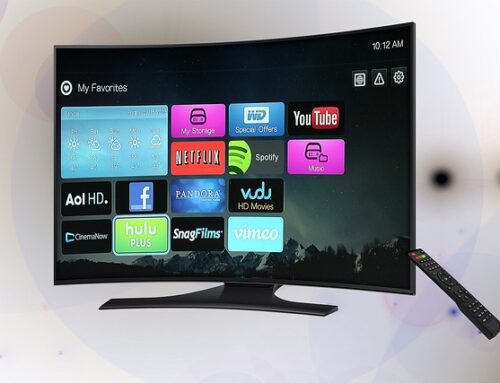Why Performance Matters
IPTV depends on a stable internet connection and efficient streaming protocols. Even the best content becomes unenjoyable if the viewing experience is marred by buffering, pixelation, or audio-video sync problems. By making a few adjustments—both in hardware and software—viewers can improve their overall experience. These tweaks range from choosing the right internet plan to optimizing network settings and fine-tuning application preferences.
Because IPTV delivers content in real time over the web, any bottleneck in the network path can create issues. This differs from traditional cable or satellite, where signals typically travel over dedicated infrastructure. For an IPTV enthusiast, a deeper understanding of network performance can help minimize disruptions, leading to smoother playback and crisp visuals.
Ensuring a Strong Internet Connection
A robust broadband plan is the cornerstone of quality IPTV streaming. An internet package offering speeds above 10 Mb per second can usually support HD content without major hiccups, while 4K or ultra-high-definition streams might require at least 25 Mb per second. However, raw speed is not the only factor. Latency and packet loss can also interrupt streaming. Checking network quality through tools like ping tests or packet loss diagnostics can reveal if the connection is stable enough for continuous playback.
Wi-Fi can introduce further variables, especially if multiple devices share the same wireless router. Walls, interference from other networks, or outdated hardware can hamper performance. For consistent results, a direct Ethernet cable is often recommended. If Wi-Fi is the only option, placing the router closer to the television or using a mesh network system can help reduce signal drops and maintain stronger bandwidth.
Device Selection and Setup
The hardware used for IPTV—whether a dedicated set-top box, smart TV, or streaming stick—plays a major role in performance. Devices with more processing power and RAM can handle high-resolution streams and complex applications more easily. Cheap or outdated boxes might stutter when running advanced user interfaces or multi-view features. Ensuring the device’s firmware is up to date can also patch security vulnerabilities and enhance streaming stability.
Cable quality between the device and TV sometimes affects video output, particularly at higher resolutions. Using certified HDMI cables avoids issues like flickering screens or unexplained dropouts. For those who rely on optical audio or other connections, verifying compatibility between devices ensures that audio outputs match the chosen format, be it Dolby Digital or PCM stereo.
Choosing the Right IPTV Player App
Many IPTV services work with a range of third-party applications. These apps differ in user interfaces, EPG (electronic program guide) integration, and streaming protocol support. Some apps are optimized for certain hardware, so testing multiple options might yield better performance. Additionally, the app’s buffer size, which can often be adjusted in settings, can affect playback smoothness. A larger buffer might reduce the frequency of small interruptions but can create a longer delay when changing channels.
Apps that provide detailed diagnostic tools can help monitor stream quality, bitrates, and other technical metrics in real time. Recognizing a drop in bitrate can prompt a switch to a lower-quality stream to avoid buffering. On the other hand, if consistent high bandwidth is available, setting the app to high quality can produce sharper images and richer colors.
Network Prioritization and QoS
Quality of Service (QoS) settings on modern routers allow users to prioritize traffic for specific devices or services. By tagging IPTV traffic as high priority, the router can allocate more bandwidth to streaming tasks over other internet use, such as file downloads or gaming updates. This ensures that even if someone in the household starts a large download, the live video feed remains unaffected.
Configuring QoS often requires accessing the router’s admin panel and creating rules for the IPTV device or relevant ports. The exact process differs by router brand, but many have user-friendly wizards or preset modes for media streaming. Once in place, QoS can significantly reduce performance dips caused by network congestion.
Monitoring Provider Performance
Sometimes, issues originate from the IPTV provider’s infrastructure. Overloaded servers or inadequate distribution networks can lead to slowdowns during peak hours. If buffering or degraded quality occurs regularly at certain times of the day, contacting the provider’s support can clarify if it is a widespread problem. Reputable providers may implement content delivery networks (CDNs) to distribute server load across geographic regions, improving performance for local users.
Frequent testing on speed and latency to the provider’s servers can help identify patterns. If speeds plummet during peak hours, it might be time to look for a provider that invests more heavily in backend infrastructure. Reading user reviews or participating in online forums can also reveal trends in reliability, highlighting which services maintain performance over time.
Final Observations
IPTV delivers an extensive range of channels and on-demand choices, but it relies on multiple components working in harmony: the user’s internet connection, the chosen device, the application, and the provider’s network. By boosting network stability, selecting well-supported hardware, and optimizing software settings, viewers can achieve consistent streams that rival or exceed traditional cable and satellite.
Anyone aiming for the best results can partner with a reputable service likeiptv, known for reliable performance. Small upgrades, such as investing in a better router or shifting to a wired setup, can yield noticeable improvements in video clarity and responsiveness. Ultimately, achieving top-quality IPTV streaming is about blending the right equipment, network configurations, and service provider in a way that suits an individual’s or household’s viewing habits.


Leave A Comment